Information On Storing Bulbs In Southern Climates
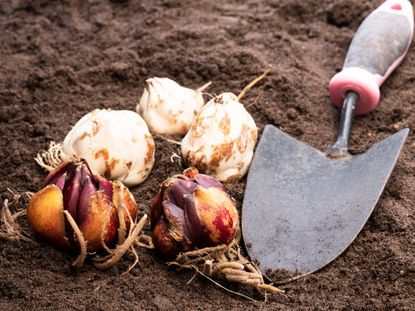

While many flowering bulbs are stored over winter, in some areas, storing bulbs may not be necessary. In many southern climates, such as zone 7 and warmer regions, storing flower bulbs is not required, with the exception of the hardy varieties, which require a chilling period for optimal growth.
Winter Storage of Tender Bulbs in South
Tender bulbs, which include most of the summer-flowering varieties (dahlia, caladium, gladiolus, tuberose, elephant ear, etc.) normally require lifting each fall to be overwintered indoors. In the south, winters are typically mild, so most bulbs can be overwintered in the ground. With adequate winter protection, the vast majority of these bulbs will continue to thrive and multiply year after year. This winter protection often involves generous applications of mulch, such as straw, shredded bark, or leaf mold. Not only does mulch help insulate tender bulbs from cool winter temperatures, but it also helps with premature growth during warm spells that commonly occur during late winter and early spring. While winter storage of tender bulbs in the southernmost regions is not necessary, lifting them will not hurt, if you still choose to do so. They can be easily lifted with a garden fork or spade shovel prior to the complete die out of their foliage. Break up the clumps and separate the bulbs, allowing them to dry out some before storing, usually about a week or two in a cool, dry area. Then, clip off foliage, shake off any remaining soil, and pack the bulbs in dry peat moss or wood shavings in a brown paper bag or cardboard box. Place them in a dark area with cool room temperatures, like a basement, until spring.
Fall Flowering Bulbs in South
Some fall-flowering bulbs are treated like tender bulbs in the south. These may include crinum, canna, and exotic dahlia varieties. They are usually lifted and stored over winter; however, in the south, this is not always necessary. Other fall-flowering varieties, like autumn crocus, nerine, and cyclamen, can be left in the ground as well. Many of these, like the autumn crocus and cyclamen, can actually tolerate cool winter temperatures. The best winter protection for these bulbs, as with the tender summer varieties, is mulch.
How Do You Store Bulbs That Are Hardy?
Due to the lack of cold winters in the south, hardy, spring-flowering bulbs (tulip, daffodil, hyacinth, etc.) are oftentimes treated as annuals. These bulbs generally require a chilling period in order to produce blooms. If bulbs don't receive adequate chilling, poor blooming, or none at all, may result. Another downside to growing hardy bulbs in southern climates is the humidity. Hot, humid conditions may cause the bulb foliage to disintegrate more quickly, which makes it difficult for the bulbs to produce enough energy for healthy growth and development. This does not mean you cannot enjoy hardy bulbs in the south, however. You simply need to provide them with a suitable chilling period. Many varieties of spring-flowering bulbs will not produce blooms a second year in southern climates. Therefore, it's necessary to dig them up at least every other year for an eight-week chilling period in the refrigerator. Lift the bulbs as you would tender varieties after blooming and once foliage has faded significantly. Allow them to dry out some and clean them off. When storing flower bulbs like these, especially tunic varieties such as daffodils and tulips, be sure to place them in ventilated bags (brown paper bag, mesh bag, etc.) with wood shavings, and store the bulbs in the refrigerator, away from any fruit. Alternatively, you can pull these bulbs up and discard them, replacing the bulbs with new ones each year, much the same as you would do with annual plants.
Gardening tips, videos, info and more delivered right to your inbox!
Sign up for the Gardening Know How newsletter today and receive a free download of our most popular eBook "How to Grow Delicious Tomatoes."

Nikki Tilley has been gardening for nearly three decades. The former Senior Editor and Archivist of Gardening Know How, Nikki has also authored six gardening books.
-
 Clever Vertical Vegetable Garden Ideas For Small Spaces – 7 Ways To Save Space
Clever Vertical Vegetable Garden Ideas For Small Spaces – 7 Ways To Save SpaceShort on garden space? Learn some vegetable garden ideas for small spaces that are fun and easy.
By Mary Ellen Ellis
-
 26 Different Types Of Orchids – With Pictures & Information
26 Different Types Of Orchids – With Pictures & InformationDiscover stunning orchid types to grow in your home and garden – from easy beginner varieties to rare and exotic species that are the preserve of experts.
By Melanie Griffiths
-
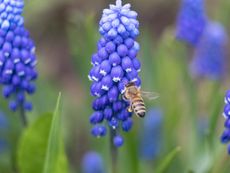 Pretty Spring Bulbs For Pollinators
Pretty Spring Bulbs For PollinatorsWhat are the best flowering bulbs for pollinators in spring? Click here to find out.
By Mary Ellen Ellis
-
 Grow An Early Spring Flowering Bulb Lawn
Grow An Early Spring Flowering Bulb LawnWant a lawn that nourishes pollinators, never needs weeding, and grows more beautiful every year? We have the lawn for you. Click for more.
By Caroline Bloomfield
-
 When To Dig Up Bulbs That Bloom In Summer
When To Dig Up Bulbs That Bloom In SummerClick here to learn when to dig up faded summer bulbs of some of the most common ornamentals grown.
By Tonya Barnett
-
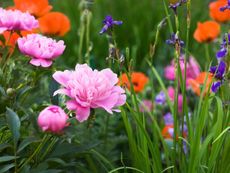 Corms, Tubers, And Bulbs That Are Deer Resistant
Corms, Tubers, And Bulbs That Are Deer ResistantWe love tulips, and so do deer! If you have hungry deer and you hunger for spring blooms, this article should help.
By Amy Grant
-
 Care for Bulbs After Blooming
Care for Bulbs After BloomingIt's tempting to chop down the leaves after you bulbs have bloomed, but you have to resist this urge! Click to learn why.
By Amy Draiss
-
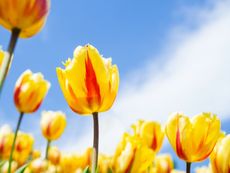 Best Spring Bulbs for Sun and Shade: Bulbs That Grow in Shade and Full Sun
Best Spring Bulbs for Sun and Shade: Bulbs That Grow in Shade and Full SunBulbs are beautiful harbingers of spring. Most flower bulbs thrive in full sun, but what if you have a shaded landscape? Read on for more.
By Amy Grant
-
 Bulb Life Cycle In Winter: What Bulbs Do For Months Under The Snow
Bulb Life Cycle In Winter: What Bulbs Do For Months Under The SnowDormancy in winter doesn't mean nothing is happening with bulbs. It just means you don't see any growth above the ground. Read on for more.
By Bonnie L. Grant
-
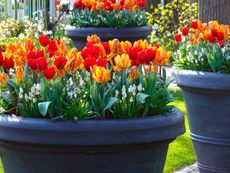 How To Plant Bulbs In Pots - Lasagna Style
How To Plant Bulbs In Pots - Lasagna StylePlanting bulbs in containers is an easy way to create a gorgeous spring porch arrangement, especially when you use the lasagna method.
By Laura Walters